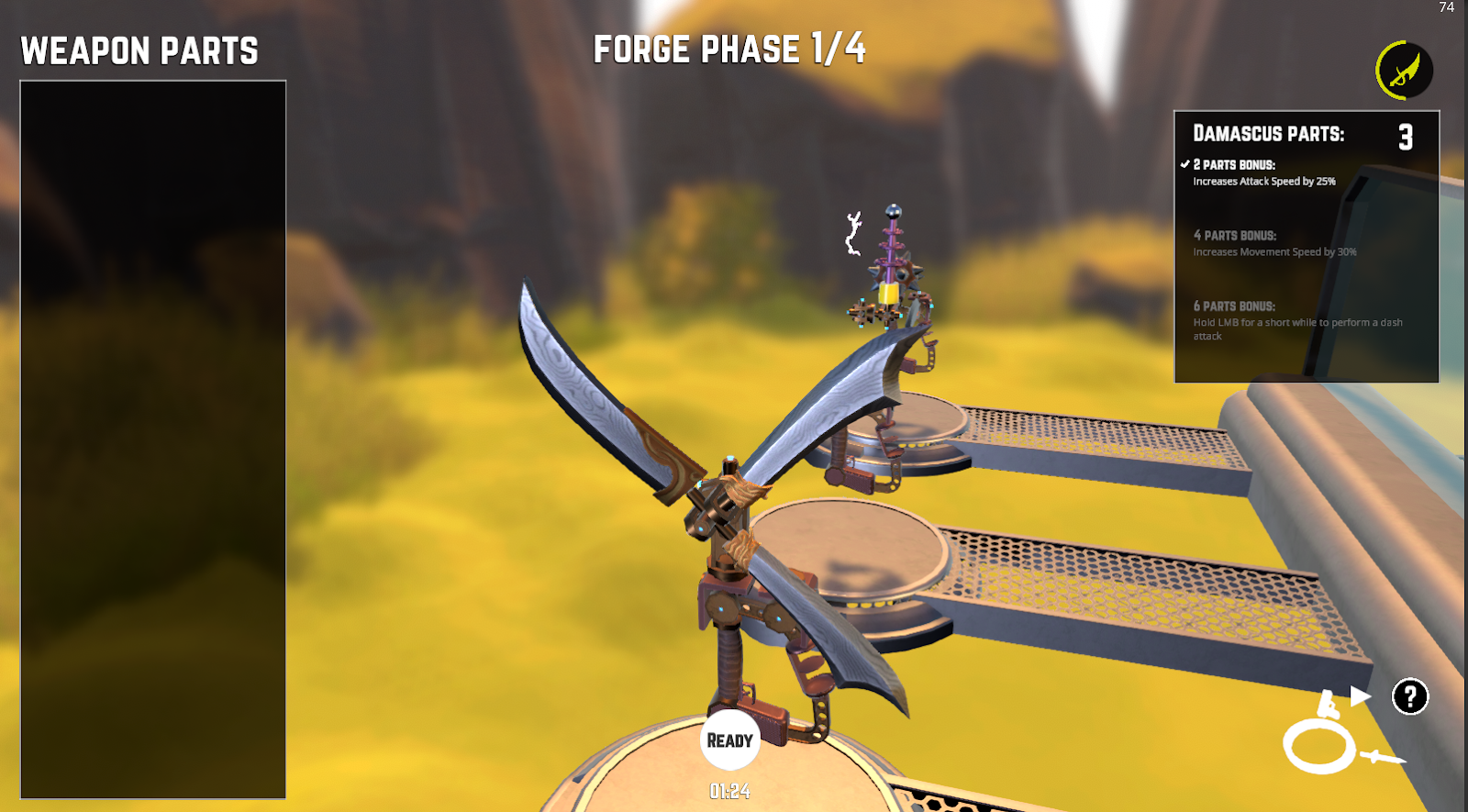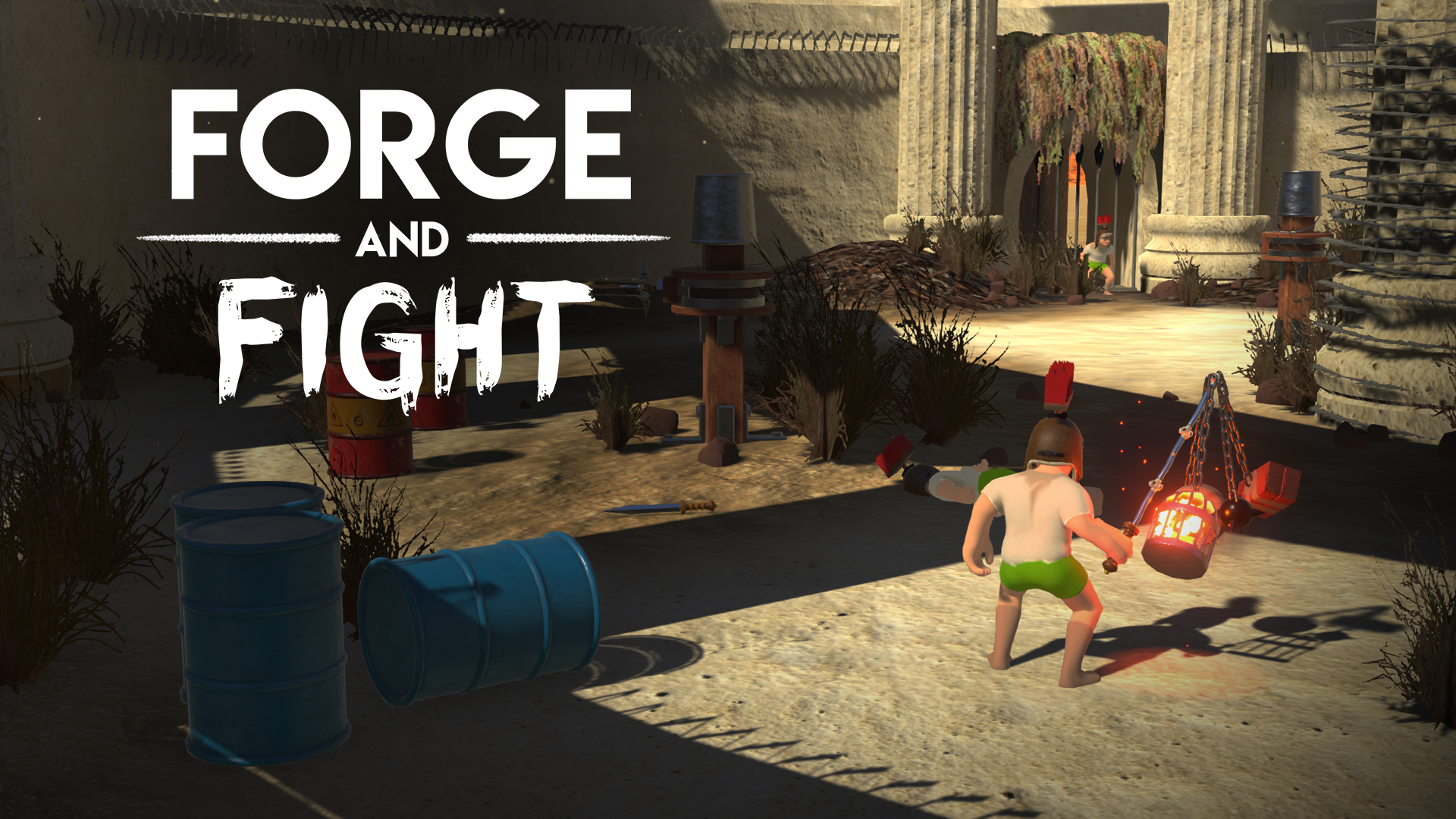Devlog - Our Weapon Philosophy
Heya, Mattias here, again with another devlog!
This time we’re going to be talking about the weapons in Forge and Fight.
In the game, you forge weapons and fight with them which means that the weapon parts need all the love that we can give them, but before we could dive in to actually designing and creating each part, there was a key design challenge we had to overcome.
Why does it matter which weapon parts I choose to put on my weapon?
The answer to this question will help us understand how to approach creating interesting weapon parts for the game.
In the prototype of Forge and Fight each weapon part mainly had three variables that would answer that question.
1). How much damage the part does.
2). How large (and easy to hit with) it is.
3). How cool it looks.
This was incredibly problematic as there is only so much variance you can make with that range of variables. That meant that it didn’t really matter what you put on your weapon which, in the long run, yields shallow gameplay.
Screenshot of the Forge and Fight prototype. The damage numbers aren’t even displayed, making the choice even less interesting for the players.
So how do we go about creating the required depth to make the choice of weapon parts matter?
We can not just look at the weapon parts in isolation but must also consider the goals of the combat itself. As to not make this blog post too long I’ll just touch on the main goal that relates to the weapon designs: The combat needs to afford multiple playstyles that can be counterplayed.
The playstyles in Forge and Fight are most easily described through their archetypes, the Tank, Sniper, Brute or Scout. There is also a possibility to mix the archetypes as well as new ones to emerge once the players get their hands on the game but this is our baseline for which we’ll design our parts.
We take inspiration from RPGs and increase the number of variables and mechanics that fit the archetypes. For instance, a part can give bonuses to sustainability making you tankier, or bonuses to manoeuvrability ranged or melee damage.
A few of the parts in the game, each with their own unique modifiers or mechanics. Very much WIP, card graphics and effects can change dramatically before launch.
With the increased variance, we were able to produce a good amount of parts with their own purpose and feel. However, it didn’t quite provide enough depth just by itself. What we were lacking at this stage, was the ability to create stronger synergies with your weapon builds. To improve upon this, we created the Class System.
Each part belongs to one or more classes and by placing several parts of the same class the player unlocks strong set bonuses with great synergizing potential.
A simple example is a part that belongs to the Sharp class, which has a set bonus that says “If you place 2 or more sharp parts, all sharp parts gain +5 damage”.
The more Sharp parts you add, the stronger the effect is. This also had the added benefit of being able to categorize the parts for the players so they could more easily understand what the role of each part is.

The Damascus set bonuses are honed towards speed.
Looping back to our original question of “Why does it matter which weapon parts I choose to put on my weapon?” the answer is now clear.
Each choice of parts can help you build towards your desired playstyle and unlock powerful synergies.
Perhaps in the future, I’ll have an opportunity to go into more detail how the process looks when actually creating a part, but for now, we’ll have to leave it at the high-level stuff.
If you got any questions or wanna discuss anything games related you can head over to our discord! And stay safe everyone!
Connect with us:
Twitter: https://twitter.com/forgeandfight
Facebook: https://facebook.com/forgeandfight
Discord: https://discordapp.com/invite/flamebaitgames
Steam: https://store.steampowered.com/app/1066810/Forge_and_Fight/
Get Forge and Fight
Forge and Fight
Create your own weapons and destroy your enemies!
| Status | Prototype |
| Author | Flamebait Games |
| Genre | Action, Fighting |
| Tags | build, Crafting, custom-weapons, flail, Sandbox, silly |
More posts
- Forge and Fight! Moves into Full Release Now🔥Dec 02, 2020
- 📣 Full Release Date Announcement!!Nov 18, 2020
- FORGE AND FIGHT IS OUT NOW IN EARLY ACCESS ON STEAMSep 17, 2020
- Devlog - Weapon Showcase #9 - Swiss Army Knife!Sep 16, 2020
- Devlog - One week to go!Sep 09, 2020
- Devlog - Weapon Showcase #8 - MinigunSep 02, 2020
- Early Access Gameplay Trailer + Release Date!!Sep 01, 2020
- Devlog - Weapon Showcase #7 - ShishparAug 26, 2020
- Devlog - Weapon Showcase #6Aug 19, 2020
- Devlog - Weapon Showcase #5Aug 12, 2020
